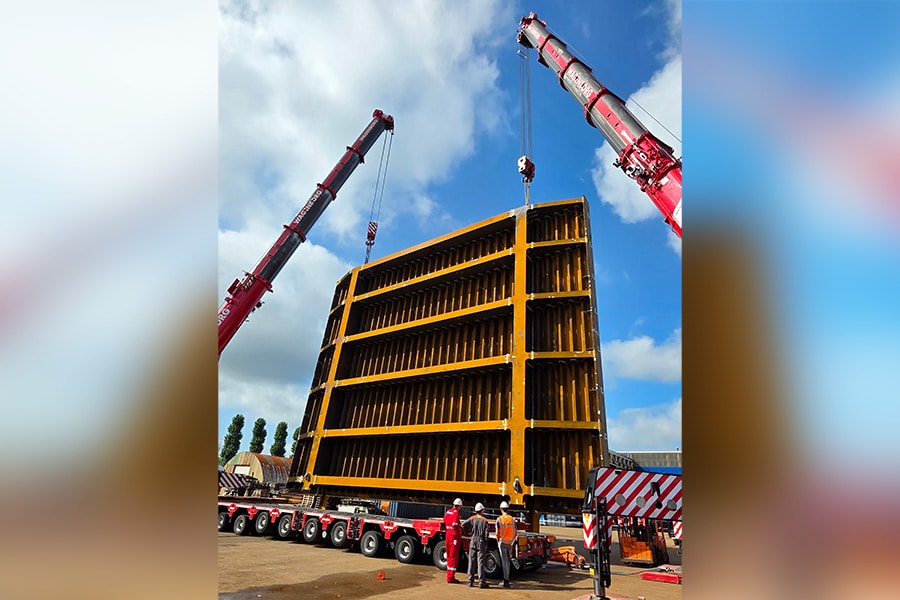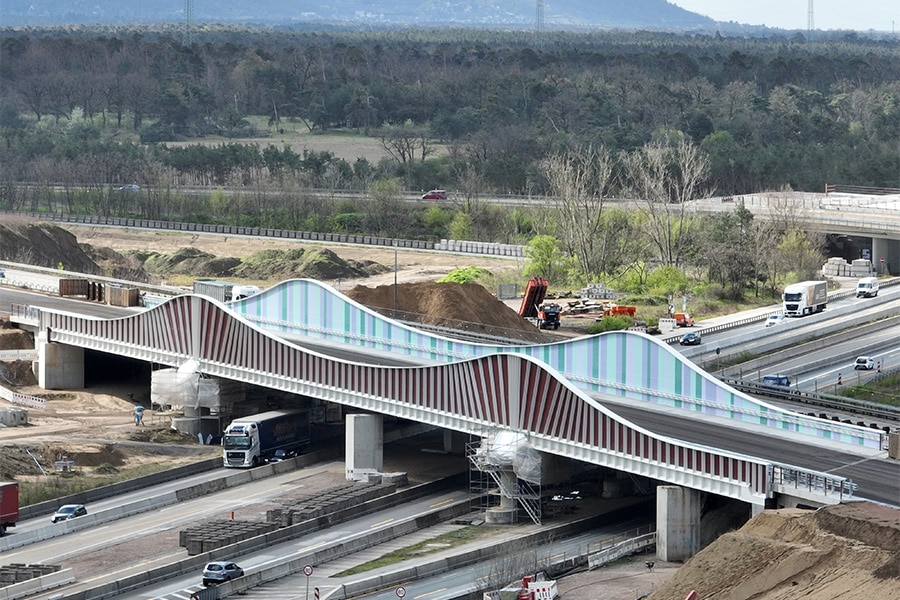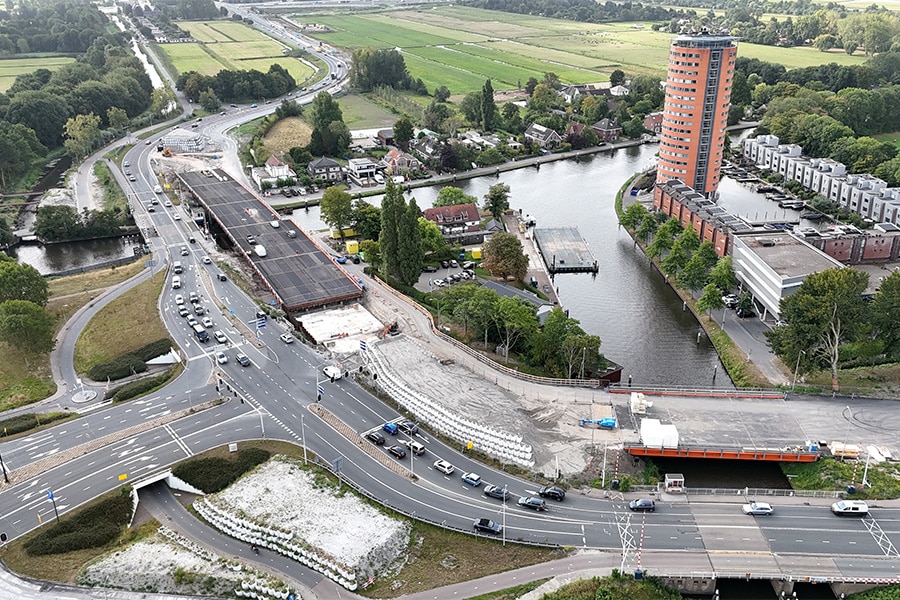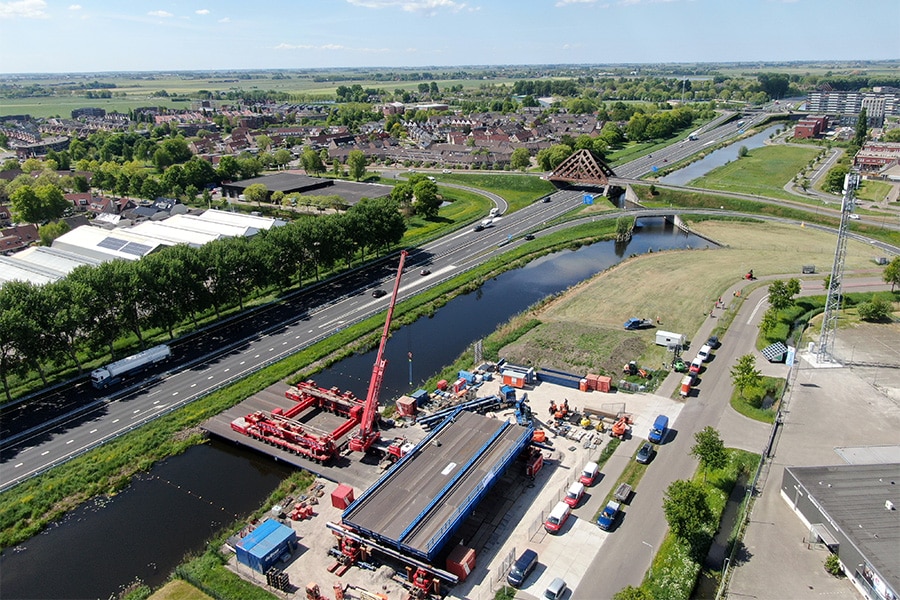
BIM model facilitates integral working in optima forma
Centrally available 3D information as the basis for almost everything
Commissioned by Rijkswaterstaat, consortium De Groene Boog, which includes the companies BESIX, Dura Vermeer, Van Oord, TBI companies Mobilis and Croonwolter&dros, Rebel and John Laing, is realizing the new A16 Rotterdam, an 11-kilometer long national highway between the A16/A20 at Terbregseplein and the A13 at Rotterdam The Hague Airport. This project is characterized by a high level of innovation in all areas, not least because of the use of BIM as the basis for 3D information and related digital applications. We spoke with Hans Pos (Croonwolter&dros), designer and test manager at De Groene Boog and with Michel Dekker (Infranea), BIM manager and project coordinator at De Groene Boog.

Project with an integral character
Michel opens the conversation, "From the tender phase, a lot of attention has been paid to the integral nature of project A16 Rotterdam. By assigning a prominent role to the Building Information Management (BIM) process and organizing it under process control and not exclusively under design, we are securing the principles of BIM throughout the lifecycle of the project." Hans adds, "The common thread in this story is that we use the BIM model for more than one application. Starting in the design phase, then functionally (i.e. during the construction process) and when the project is delivered for training purposes and maintenance. For example, we can enrich the BIM model with numerous relevant documents, in images and in writing. So the BIM model is an integral part of the project."

BIM as a power source for virtualization
The Rottemer Tunnel has a Digital Twin (TWIN16) that provides opportunities to virtually test all kinds of things. The basis for TWIN16 is BIM, which contains all 3D information related to the tunnel. "That 3D information was used in the design process of the tunnel," Michel explains. "In practice, this means a contribution to risk management for both client and contractor.

At an early stage, "clashes" can be detected in BIM. Because of the extensive 3D data generated in BIM, we are able to virtualize the tunnel. That provides an extra push when, for example, you want to inform and involve stakeholders in a project of this size." Hans: "Besides being able to realize lifelike simulations from different positions, we also use the digital twin for virtual testing of the systems in the tunnel. Even before the tunnel is in operation, the TWIN16 can be deployed according to the RTD principle, namely Exercise, Training and Education. Think of the tunnel operators, emergency services et cetera." Michel: "Concrete examples of the cooperation between client and contractor include organizing theme table sessions, sharing the current BIM models, giving workshops in BIM, holding BIM consultations and virtually testing the tunnel design by going through the TWIN16 model together with the Rotterdam Safety Region."
It can be even more dynamic
Construction consortium De Groene Boog has learned a lot from deploying BIM and the TWIN16. "One thing is certain: we have become convinced that it makes sense to build a work of art in advance as a 3D model in BIM and use the 3D data to perform simulations," Hans said. "Practicing with VR glasses, determining people's positions, doing safety checks and phase technical thinking, it can all be done in advance in a simulation. However, there is not yet a 'game environment' for the building itself, but it certainly deserves to be looked at in the future." Michel adds, "It is entirely possible to simulate construction. Now we already work with static 4D, but you don't walk through the 3D model yourself yet."
Even scheduling people can be more efficient by working with simulations. Hans gives a simple example: "Toilets on a building of this size have to be strategically positioned. In a simulation you can find out that some employees spend a total of an hour walking back and forth to the toilet. You pick out little things like that flawlessly in a simulation. Michel outlines that the challenge is not the size of the project, but the novelty of this way of working. "Projects like A16 Rotterdam give us a perfect opportunity to try out new ways of working like this. You can do things that couldn't be done before. An example: a group of stakeholders was concerned about the launch of the road surface above the Terbregseplein. The road surface is preceded by "the nose," a huge blue wedge of steel. The fear was that traffic would be distracted by the movement. By simulating the launch and saving it as film, seen from the driver's eyes, we were able to demonstrate that to a driver driving underneath it, it appears as if 'the nose' is stationary."
Exercise environment for emergency services
"We promised in the EMVI a training environment for the emergency services. In fact, using our game engine, anything is possible, you can simulate any calamity, including victims trapped in a car," Hans said. "It's a new world in which we are doing expansions every day." Michel: "The digital twin is already starting to become established, TWIN16 was made especially for the Rottemer Tunnel. A digital twin goes beyond the simulation of structure and situations. Peripheral things are also possible, such as sending mail from the digital twin, or performing RSA audits better, in 3D instead of 2D. Even the weather can be simulated, and this has repeatedly proven useful."
Business no longer falls off the radar
Hans and Michel are pleased that De Groene Boog is being given the opportunity to apply these techniques. Hans: "We are experiencing a significant reduction in failure costs through BIM and the TWIN16. However, we all have to embrace this working method to make the model 'as built'. Michel: "In BIM Collab, we make all geometric interfaces transparent. We work with a whole team of people in BIM Collab and so we have a clear picture of the interfaces and clashes. We talk to each other about them and look for solutions together. Things no longer fall off the radar this way and we are rid of discussions in the construction hut."
Client Rijkswaterstaat also accepts the BIM model and uses it for verification and validation. "This is possible because we have not only used BIM in the design process, but also use it in process control," Hans concludes.




